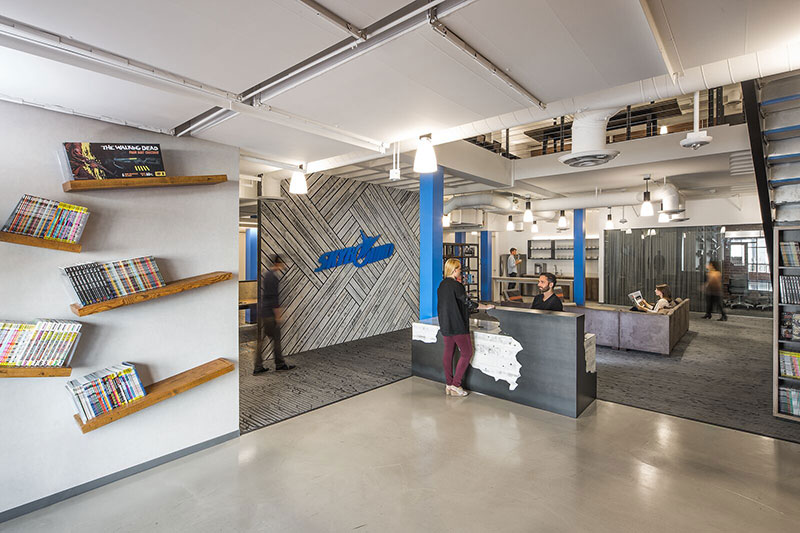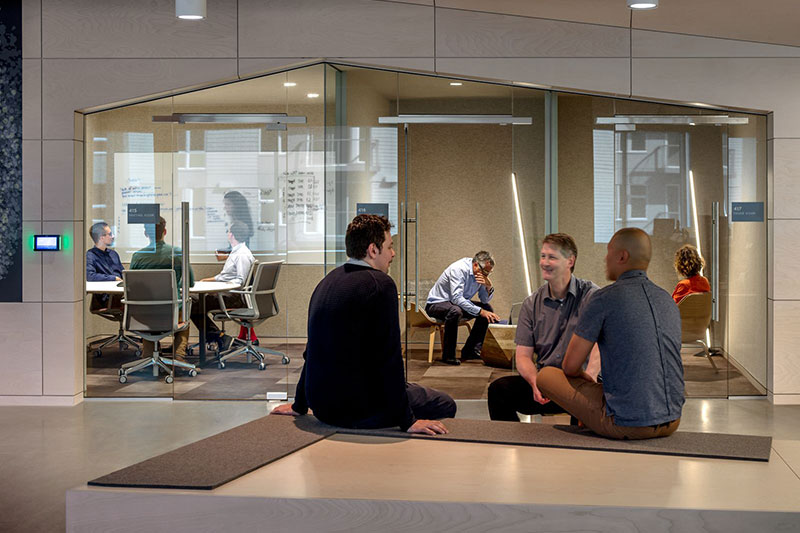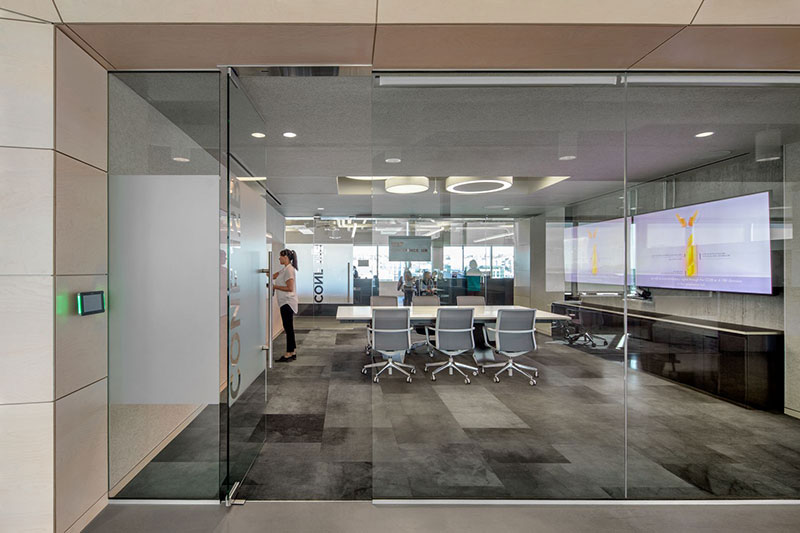Inertia of the Workplace
In today’s world, technology and the workplace are not separate entities. Technology is part of nearly every workflow and every workplace, integrated into the fabric of how we work and what we do each day. As such, it’s impossible to separate technology from space and people, and anyone who tries to objectively design technology without considering the space and the people who will be using it will ultimately fail on some level.
It’s interesting because when you think about today’s modern workplace, you quickly find that it is at odds with itself. Designers are tasked with creating spaces that are flexible but consistent, provide open collaboration but deep focus, promote innovation but enable execution, are open yet private, and spaces that are personal while promoting community.
Then layer on top of that the varying mindsets and skill sets of the workers themselves and you start to get some sense of how difficult workplace and technology design can be.
 Skybound utilizes design to create motion and energy that match their company and its people
Skybound utilizes design to create motion and energy that match their company and its people
The problem with many AV designs, however, is that they’re done in a vacuum. Designers rarely if never meet the actual people who will be using the systems and instead rely on reflected ceiling plans and secondhand information from IT. The reflected ceiling plan will never tell you anything about how people work, and while a technical contact in IT is necessary to assure systems are secure and supported, they may also have a skewed view of what "user friendly“ technology looks like.
The only way to properly design technology for a space is to start with the status quo, define the future goal, and then create a plan to bridge that gap. The current state of mind and familiarity of technology of the users themselves defines what I call the inertia of the workplace.
As a refresher, inertia is laid out in Newton’s First Law of Motion and states that an object at rest stays at rest and an object in motion stays in motion.
A workforce has this property, and may even have different inertia in different departments or areas depending on the unique makeup of each. Just adding cutting edge technology to a group that has been in stasis will not create meaningful adoption, and on the flip side, a group that moves fast with modern tools won’t slow down to adopt new tools just because the company invested in them. The former group will resist (stay at rest) while the latter group will circumvent (stay in motion).
 Juno offers options for collaboration that meet different modes of work and mindsets of employees
Juno offers options for collaboration that meet different modes of work and mindsets of employees
So how do you know what the inertia of the workforce is to begin with?
The best way is not to ask, but to watch. Many times a job walk is done at the new location to explore how technology may play an increased role in the new venue, but I will tell you that it is way more important to walk the existing workplace and observe how they work currently.
If there’s one thing that behavioral studies illustrate, it‘s that people many times say one thing and then do another. They also have trouble articulating exactly why they like or dislike something (they just know that they do) and often struggle with accurately predicting their own future behaviors.
Interviews about workplace technology will often yield answers that the person answering thinks you want to hear or that make them sound smarter or more open to change than they actually are.
Observation typically uncovers the truth and offers a window into the current state, potentially revealing the path to the desired results.
Observation reveals habits and routines, and if you’re implementing new technology, leveraging existing habits and routines will yield exponentially better results than trying to replace those existing behaviors with a logical argument for changing them.
 Technology can be utilized in a mix of new and traditional ways to meet the workforce where they are
Technology can be utilized in a mix of new and traditional ways to meet the workforce where they are
"Jim, If only you’d stop doing your job the way you’ve been doing it for the last 15 years and adopt this wholly different and foreign way of working, your life would be so much better.“
That is what we, as technologists, often ask people to do and then we are appalled when we realize the users don’t use, and even more ego crushing, HATE the systems we deliver.
As designers, we need to leave our "understanding“ of technology at the door. Observe the existing users in their day- to-day roles. Isolate areas where there are opportunities for technology to play a larger role and add value. Leverage familiarity with consumer-centric user interfaces and things they use every day. Design around the devices in the pockets and laptop bags of the people themselves. Listen to how they describe technology, the words they use, and then reflect that vernacular in the user interfaces that you develop. (Do the people even call sources or inputs by those names?)
Reducing friction means designing technology that leverages the frameworks they already use and understand, not developing a best of breed solution based on your knowledge of the space and then trying to get them to adapt to your way of utilizing it. Technology adoption isn’t an issue of training, it‘s an issue of framing.
So, the next time you start interfacing with a new client, start to ask yourself what the inertia of their workplace is. Start with their behaviors and habits, and then design systems that naturally leverage those to either start the technology ball rolling or make sure your new design doesn’t get bowled over by their existing momentum.






